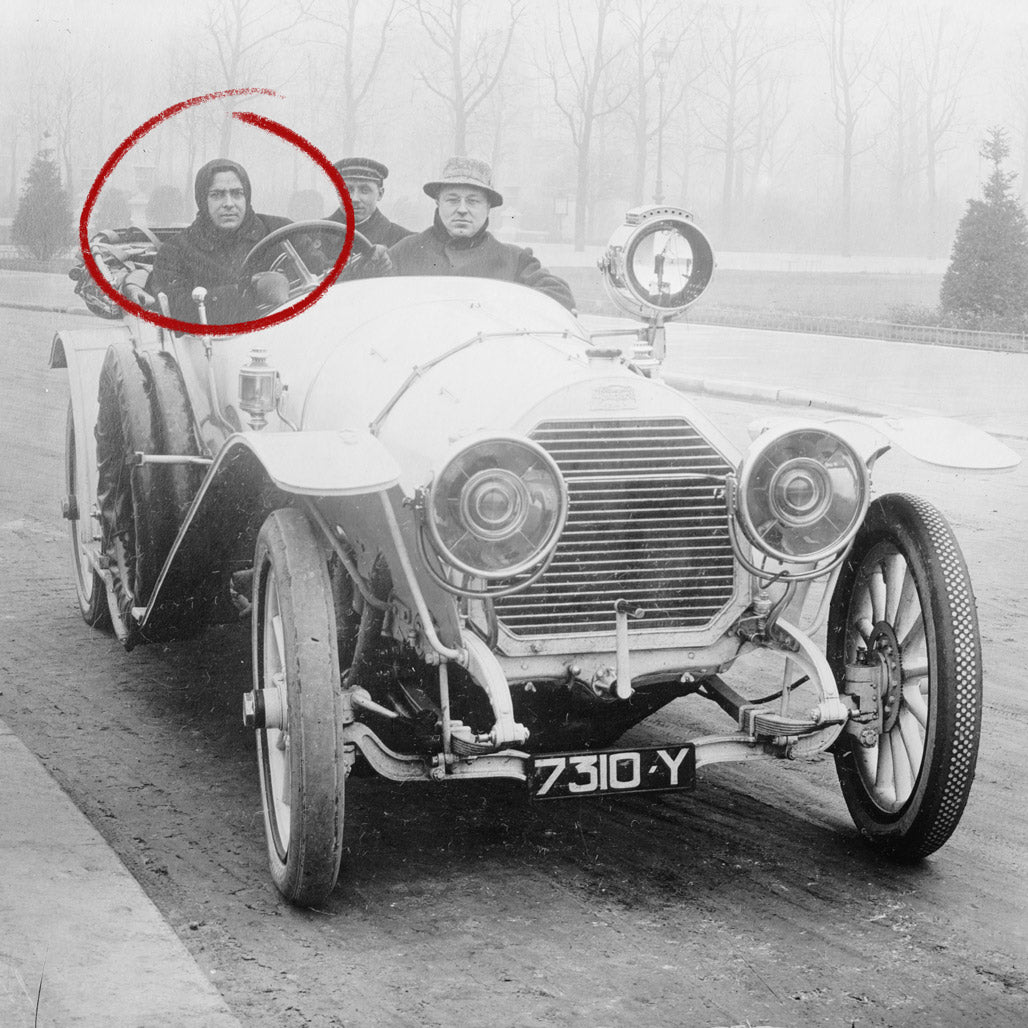
Francis Picabia: Motorhead Bad Boy of Dada
Share

You might not have heard of Francis Picabia. Unlike others in the Dada and Surreal worlds of the 1910s and 1920s, like Marcel Duchamp and Salvador Dali, Picabia wasn't a supreme self-publicist or arch big thinker. But he had a racy enough lifestyle (see above!) and was always interested in challenging the artistic status quo. In this article we'll have a brief look at his life and see why he's someone whose work you might want to see more of.

Francis Picabia was a French artist who made significant contributions to the art world during the early 20th century. His works were marked by a unique blend of realism and abstraction, and he is best known for his association with two of the most important art movements of the era: Dada and Surrealism.

Dada artists in Paris in 1920. From left to right, Back row: Louis Aragon, Theodore Fraenkel, Paul Eluard, Emmanuel Faÿ. Second row: Paul Dermée, Philippe Soupault, Georges Ribemont-Dessaignes. Front row: Tristan Tzara, Celine Arnauld, Francis Picabia, André Breton.
Picabia's interest in modernity began after a trip to the United States in 1913, where he was exposed to the latest technology and industrialization. He saw machinery as the epitome of modernity and believed that it was the key to understanding the contemporary world. This interest in the mechanical and the industrial is reflected in his "mechanomorphic" works, where he used machine-like forms and shapes to represent the human form.

In 1916, Picabia became one of the leading members of the Dada movement, which was characterized by its anti-art stance and its rejection of traditional values. Dada artists aimed to challenge the established norms of art and society, and they did so by creating works that were absurd, provocative, and often nonsensical. Picabia's contribution to Dada was his use of readymades - found objects that were transformed into works of art - as well as his collages, which were made from a combination of found images and objects.
Picabia's association with Dada did not last long, however. He grew disillusioned with the movement's nihilism and lack of direction, and in the early 1920s, he turned his attention to Surrealism. Unlike Dada, which was focused on the rejection of tradition, Surrealism aimed to explore the subconscious and the irrational. Surrealist works often featured dreamlike imagery, bizarre juxtapositions, and unexpected associations.

Picabia's contribution to Surrealism was his use of automatism, a technique that involved creating art without conscious thought or control. He believed that the subconscious mind was capable of producing art that was more authentic and spontaneous than anything that could be created through conscious effort. His use of automatism can be seen in his later works, which often featured abstract forms and shapes that seemed to emerge spontaneously from the canvas.
Picabia's career was marked by his willingness to experiment with new forms and techniques, and his contributions to both Dada and Surrealism helped to shape the course of modern art. His work continues to inspire and influence artists today, and his legacy as one of the most innovative and unconventional artists of the 20th century remains secure.
You can see our current range of Francis Picabia exhibition posters by following this link.

